Enthusiasts / Cool Stuff
Some common tweaks and upgrades begin with setting up a phono cartridge and the tone arm. Pure-Grooves is glad to help you if you aren't confident in doing this yourself. Contact Us to schedule an appointment.
Before all else, LEVEL the turntable, checking at several places on the platter and base. Then proceed…
- Overhang: This refers to the small distance the stylus extends past the center spindle diameter line. This is done so the tonearm traces an arc across the records' grooved area with the least possible angular misalignment. This distance is specific to each turntable, and is usually adjusted with the aid of a gauge with alignment marks drawn on it. The stylus is really only perfectly aligned in two spots on the record. These are called the null points, which should be marked on the setup gauge.
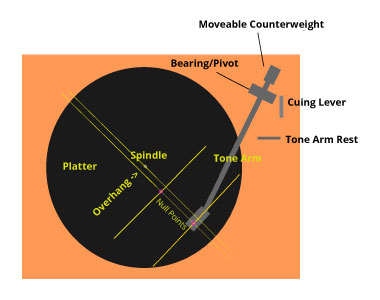
- Zenith: During cartridge setup, the cartridge must be rotated so that the cantilever & stylus line up to the straight lines on the alignment gauge. This must be done while not changing the overhang adjustment.
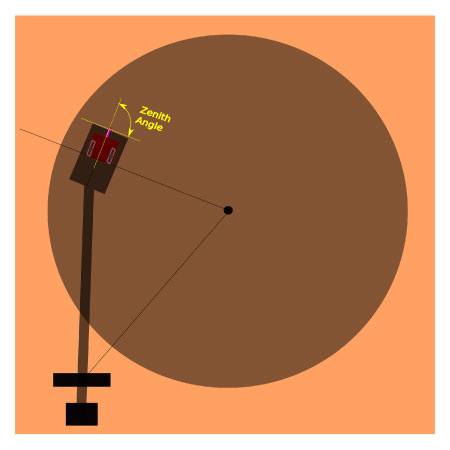
- Azimuth: This refers to the stylus being 90 degrees perpendicular to the record surface. A slight tilt in either direction from 90 degrees will result in shifting of the soundstage. Not every turntable has this adjustment, but it should be verified at least visually and with a test record that has modulations in only one channel of the groove. Azimuth is correct when the modulated groove is heard only in the intended channel, and no sound comes from the other channel, and the test results are equal between the left and right channels. Achieving the best azimuth adjustment will minimize “crosstalk” between the L & R channels, and enhance the channel separation, which gives us a wide, holographic soundstage.
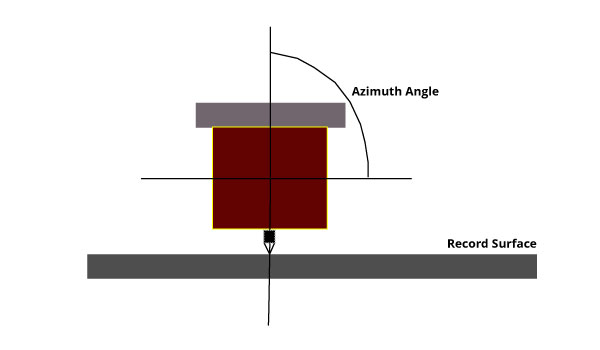
- SRA and VTA: Here are two often misunderstood parameters that drive audiophiles to panic; Stylus Rake Angle, and Vertical Tracking Angle. In the diagram below, pay specific attention to Stylus Rake Angle above all else. This should be about 92 degrees, to match the angle of the cutting head used to make the recording. Most manufacturers advise to begin with the tonearm level to the record surface, hoping that will work well enough. On elliptical and high-end fine-line and Shibata styli, SRA is more critical to achieving the performance potential of the cartridge. VTA is tied to SRA, and is adjusted in most cases by raising or lowering the rear of the tonearm until the best sound is achieved. If you have access to a microscope, this can be useful to verify the actual angle of the stylus versus adjusting by ear.
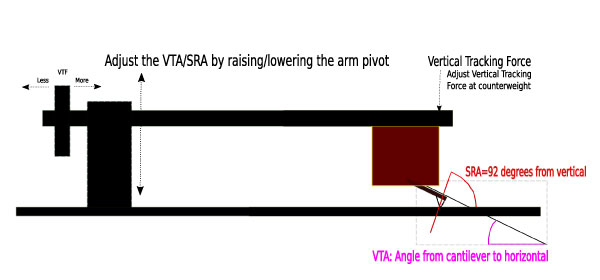
- VTF, or Vertical Tracking Force: This setting of the stylus' downward force is dictated by the cartridge manufacturer, and can range from 1-3 grams (~10-30 millinewtons). This setting is important to precisely set within the specified range, so a special balance or scale is required to measure the force accurately. Once the force is adjusted to the recommended setting, you can experiment within the manufacturer's specified range. Avoid the temptation to use too little stylus pressure.
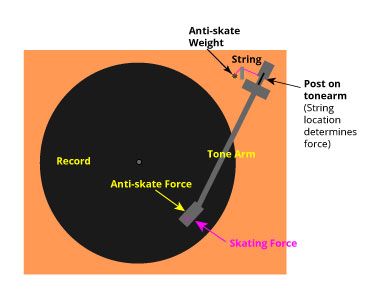
- Anti-Skating, or Horizontal Tracking Force (HTF): This adjustment is needed on pivoted tonearms to counteract the tendency for the stylus to “skate” across the record surface. This tendency causes the stylus to favor the innermost groove if not compensated for. Many turntables use a small weight on a string to supply the counter-force to the tonearm. Some turntables use sophisticated dials and springs, and others use magnets to achieve this, while some tables have no means of adjustment at all. Proper adjustment (even side-to-side pressure on both groove walls) can be verified with a test record with highly-modulated grooves that will torture-test the stylus until distortion is heard from one channel or the other. Proper anti-skate will result in both channels distorting at the same time.